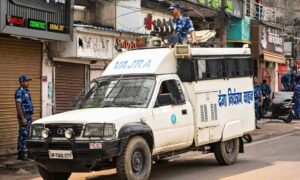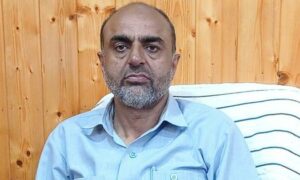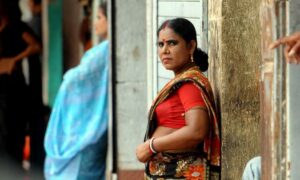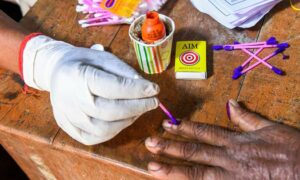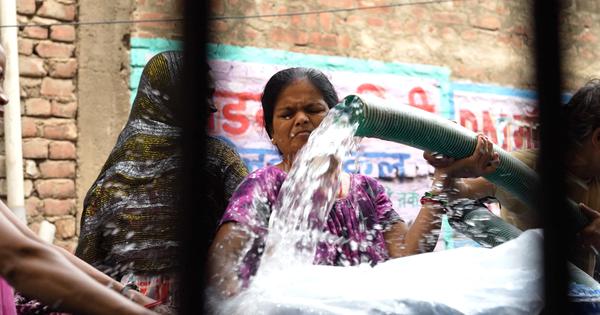
Water future in a climate-risked world
by Sunita Narain
In this decade we will see the revenge of nature as climate change impacts increase. We need to scale our work to invest in local water systems to capture every drop of rain, so that we can build local resilience against drought. We also need to do it in our cities – lakes and ponds are the sponges that will allow us to harvest the rain-flood and make sure it does not become wasted water. We need to protect our forests and green spaces, as this is how water recharge will increase. In these times of water stress, not only must we make sure that wastewater or sewage is treated, but that it is recycled and reused. The waterbodies that we protect in our cities – the same ponds and tanks that we use to divert and harvest rainwater – can be used to channelise the treated sewage, and in turn, recharge groundwater. Water to water. We can be water-secure if we are water-wise.
In the past few years, climate records have tumbled like never before. First, the planet observed its hottest June on record. Then came July, which recorded the hottest two weeks ever. In June, the surface temperature of the world’s oceans was the highest ever; Antarctica’s ice was the thinnest ever. The heat has gone off the charts in many parts of the world. Never before have there been extreme rainfall events that have resulted in such large-scale loss of property and lives. Scientists warn that this is only the beginning of our season of despair, because much is changing in the natural world around us.
Monsoon and water in a changing climate
by Roxy Mathew Koll
India’s intimate relationship with the monsoon and water shapes its culture and economy. Today, climate change is altering our connection with water, with its impacts rippling through the monsoon, glaciers, rivers and oceans, affecting every citizen.
The geographical location of India, surrounded by tropical waters at one end and the Himalayas at the other, was once the region’s forte, but no longer. The Indian Ocean is warming at the fastest rate and the Himalayan glaciers are melting rapidly. As a result, the subcontinent is witnessing a trend of rising floods, landslides, droughts, heatwaves and cyclones. This is affecting the food, water and energy security of the region, deeply endangering lives and livelihoods. India has become the poster child of climate change.
Globally, water systems are under unprecedented strain, exacerbated by rising temperatures that intensify evaporation, disrupt precipitation patterns and amplify extreme weather events. Currently, over a third of the global population faces water stress, a figure expected to reach half the population by 2050, as demand continues to outpace supply. This crisis is not merely one of scarcity but inequity, where the most vulnerable communities bear the heaviest burden. Urban centres dominate resource consumption, leaving rural populations, particularly in arid and semi-arid regions, grappling with limited access to clean water.
The plight of Denganmal, a village 140 kilometres east of Mumbai, is one of the cases that illustrates these disparities. Chronic water scarcity has driven households to adopt extraordinary measures, including polygamous marriages where “water wives” are tasked with fetching water for their families. This stark reality highlights the human cost of water inequity, where women shoulder the disproportionate burden of climate change.
Rivers at nature’s pace
by Siddharth Agarwal
In 2016, I decided to walk the length of the River Ganga, from sea to source, over a target period of four months. By then, I had already finished university and spent months cycling and walking across different parts of India.
My knowledge of rivers, however, was quite limited. I had chosen to walk along a river because I wanted to get disentangled from the network of roads. The river would now be my guide. I dove deep into the large troves of writing and commentary available on India’s rivers.
It eventually took me six months to complete my journey from Gangasagar in West Bengal to Gangotri in Uttarakhand, walking approximately 3000 km during this period. The journey was full of hurdles, breaks and lessons in humility.
It required a total submission to nature’s intended pace for humans. The pace of walking made me form genuine connections with people, as well as with the river.
What became evident was that those, including myself, who benefit most from, and also design the transformation of our rivers into mere resource pools, do not really have a relationship with rivers or with nature. We are far removed from the implications of our choices, a distance awarded by the designs and scales of modernity. It is only when we have reached an unavoidable precipice that we begin to see the results of our choices.
The practice of walking along rivers has continued ever since my first walk, and has now transformed into a fellowship program – Moving Upstream – that I offer through my organisation, Veditum India Foundation. Along with others in the program, we have now walked the lengths of Rivers Ganga, Ken, Betwa, Sindh, Luni and parts of the Mahakali.
Water migration: Shoots of hope
by Roli Srivastava
Kharkhara, I thought, had a dry ring to it, like the sound of leaves rustling. Or an old man clearing his parched, itchy throat. Or footsteps on the bone-dry farms of this deserted, drought-hit village.
Its few inhabitants – the elderly, the sick, the poorest – sat outside their homes, staring at a street lined with padlocked houses. A golden dust filled the air; specks of it had settled on their cheeks that they had not bothered to wipe off. A sense of ennui enveloped all existence in this village when I walked around it in early 2018.
Kharkhara is a village of those “left behind”, like countless villages across India where the young, able-bodied residents have migrated for work, as farm yields wilt under the weight of climate extremes and years of water-intensive farming practices. In the case of Kharkhara, located in Balangir district of the eastern Indian state of Odisha – one of India’s most climate vulnerable regions ravaged by repeated cyclones, droughts, and floods – villagers trade their freedom for cash advances from labour contractors to work in brick kilns, ending up trapped in debt bondage. And yet, others follow them.
“There is no choice really”, I was told by Mathura and Maheshwar, a couple in their fifties. Their children and relatives had migrated, but they stayed back, unsure whether they would be able to cope with the backbreaking work at a kiln. There was also the fear of life beyond the village they had spent their lives in. Staying back meant living an isolated life, but they chose over exposing themselves to unknown cities and hardships.
Sacred waters: Timeless wisdom
by Romola Butalia
We protect that which we love more dearly than ourselves. We love what we truly know and respect. When did we stop loving the Earth, the Waters, the Fires, the Air and Space, all of which, according to Vedic and other traditions, form our bodies and all matter? When did we stop feeling the pain of all beings? When did we replace the fulfilment that comes from deeper connections with the emptiness of simulation? When will we cease to think of water, and everything including humans, as mere resources? When will we value the intrinsic worth of life and rediscover the harmony that we have lost? When will we measure life through balance rather than in terms of currency?
While ideological differences exist between religions, water is a unique unifying deeply powerful symbol, that we need to value more. The sacred nature of water common to cultures and religions has the power to unite people by reminding us of our shared need for, and responsibility to protect it. Beyond the fundamental necessity for clean fresh water for survival, the spiritual and religious reverence for water can inspire many to deepen their connection with it and support conservation efforts. It does not matter whether one has a secular, religious or spiritual perspective; our collective love and respect for water as the key to life, and this sacred connection can foster greater understanding of our relationship with water. This awareness is crucial to preserving it and honouring the deep respect it has been accorded through centuries of conscious living, which we seem to have somehow lost in recent times.
Excerpted with permission from Living Waters: Pulse of the Planet, edited by Romola Butalia, Ink Impact Publishing.
📰 Crime Today News is proudly sponsored by DRYFRUIT & CO – A Brand by eFabby Global LLC
Design & Developed by Yes Mom Hosting

